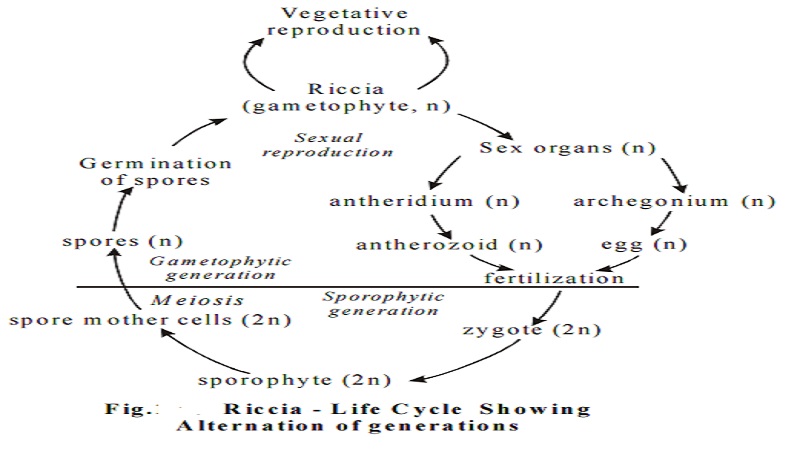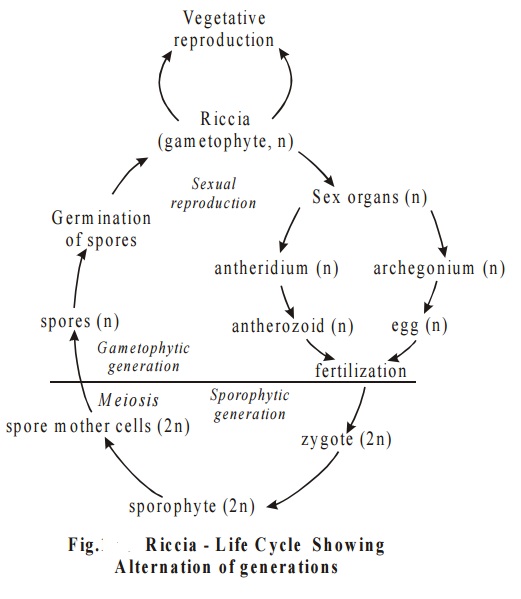Chapter: 11th 12th standard bio zoology Human Body higher secondary school
Life cycle of Riccia

Life cycle of Riccia
Riccia shows alternation of generations a haploid gametophyte generation and a diploid sporophyte generation alternate each other.
The haploid generation is called the gametophyte because it undergoes sexual reproduction to produce male and female gametes. Production of gametes involves mitosis, so the gametes are also haploid. The male and female gametes of Riccia fuse to form a diploid zygote which grows into the next generation the diploid sporophyte generation. Sporophyte produces spore tetrads. Production of spore involves meiosis. Hence, there is a return to the haploid condition. The haploid spores give rise to the gametophyte generation. In Riccia, the gametophyte generation is dominant.
The life cycle of Riccia shows regular alternation of gametophytic and sporophyte generations. The two generations are morphologically different hence this type of alternation of generation is known as heteromorphic.

Fertilization
Water is indispensable for the process of fertilization. The antherozoids reach the mouth of the archegonuim through the medium of water. The mucilaginous mass of the neck region absorbs water and swells and as a result the cover cells get separated. This results in the formation of a passage which facilitates the entry of sperms or antherozoid. The antherozoids enter the mouth of the archegonuim, travel through the neck and reach the vicinity of the egg. One of the antherozoids penetrates egg cell and the fertilization is effected. Ultimately by the union of the nuclei of male and female gametes, a zygote is formed. The zygote contains 2n number of chromosomes i.e., the zygote is diploid.
Sporophyte Generation
The diploid zygote is the first cell of the sporophyte generation. This cell secretes a wall around it soon after the fertilization and enlarges in size and nearly fills the cavity of the venter. Afterwards it undergoes division and attains two celled stage. The upper cell is known as epibasal cell and lower cell is known as hypobasal cell.
Related Topics